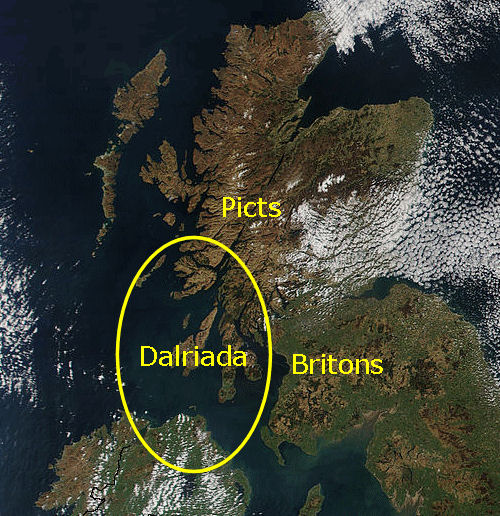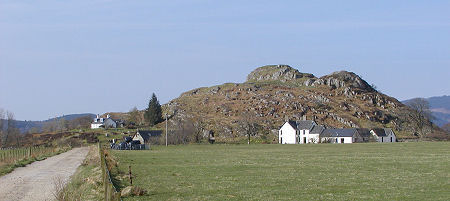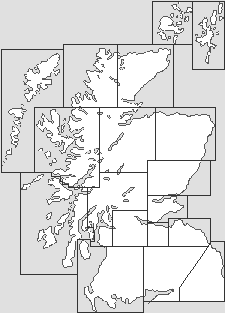 Location and Extent of Dalriada Around 700 Base Image by NASA: See Note About Image Copyright |
The Kingdom of Dalriada or Dál Riata occupied much of modern day Argyll as well as Arran and part of northern Ireland.
The people of Dalriada were known as the Scoti and probably originated in north-east Ireland. The "probably" is because no trace of the large scale migration of people this would imply has been found on the ground, and some experts believe that the Scoti were actually descendents of the Epidii tribe who were earlier recorded as living in western Scotland.
Either way, the Scoti, or Scots, remained a force in their part of Scotland from before 500 until after 800. The last King of Dalriada was Kenneth I, who went on to gain control of the Pictish crown in 834 and merge the crowns of the Scots and the Picts to make a single kingdom, Alba: what we would today call Scotland - though its borders took centuries more to define.
The seat of power in Dalriada was at Dunadd in Argyll, which served as the capital of the Kingdom and was where its Kings were anointed.
For administrative purposes, Dalriada was divided up into three or four "kindreds" or subdivisions. The Cenél nGabráin covered Kintyre, Arran, Bute and Cowal the Cenél Loairne covered Lorn, Ardnamurchan and Mull; and the Cenél nOengusa covered Islay and Jura. Later on the Cenél Comgall was created to include Bute and Cowal.
 Dunadd |
